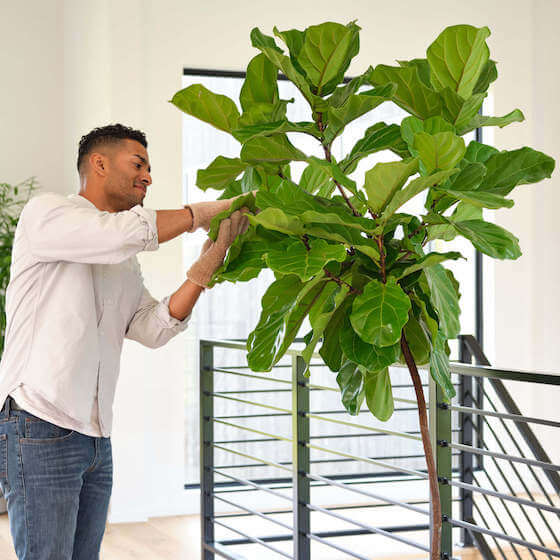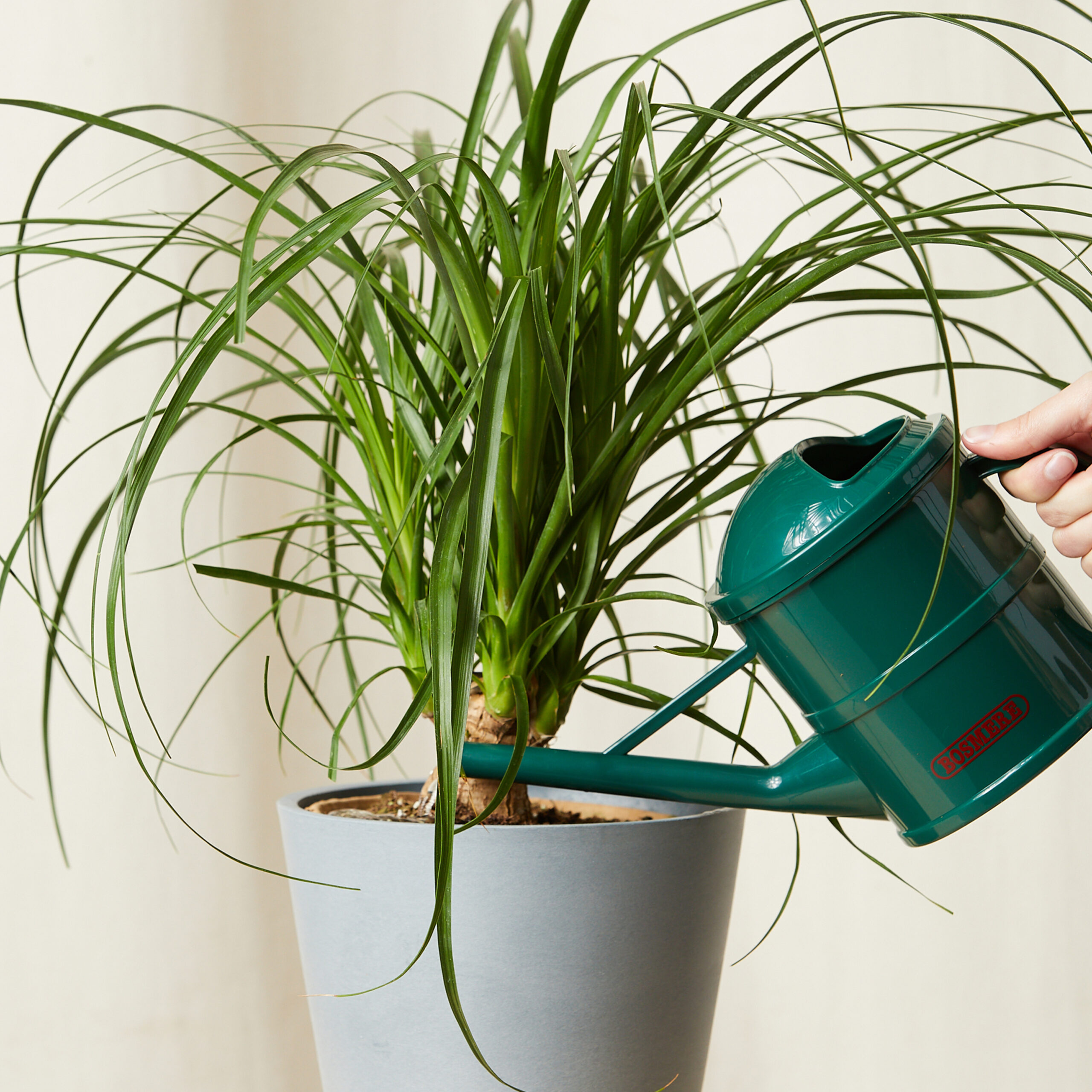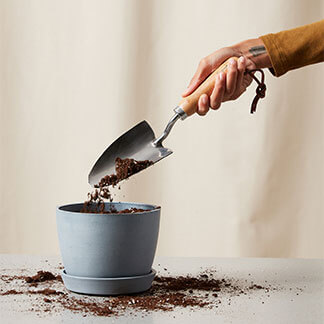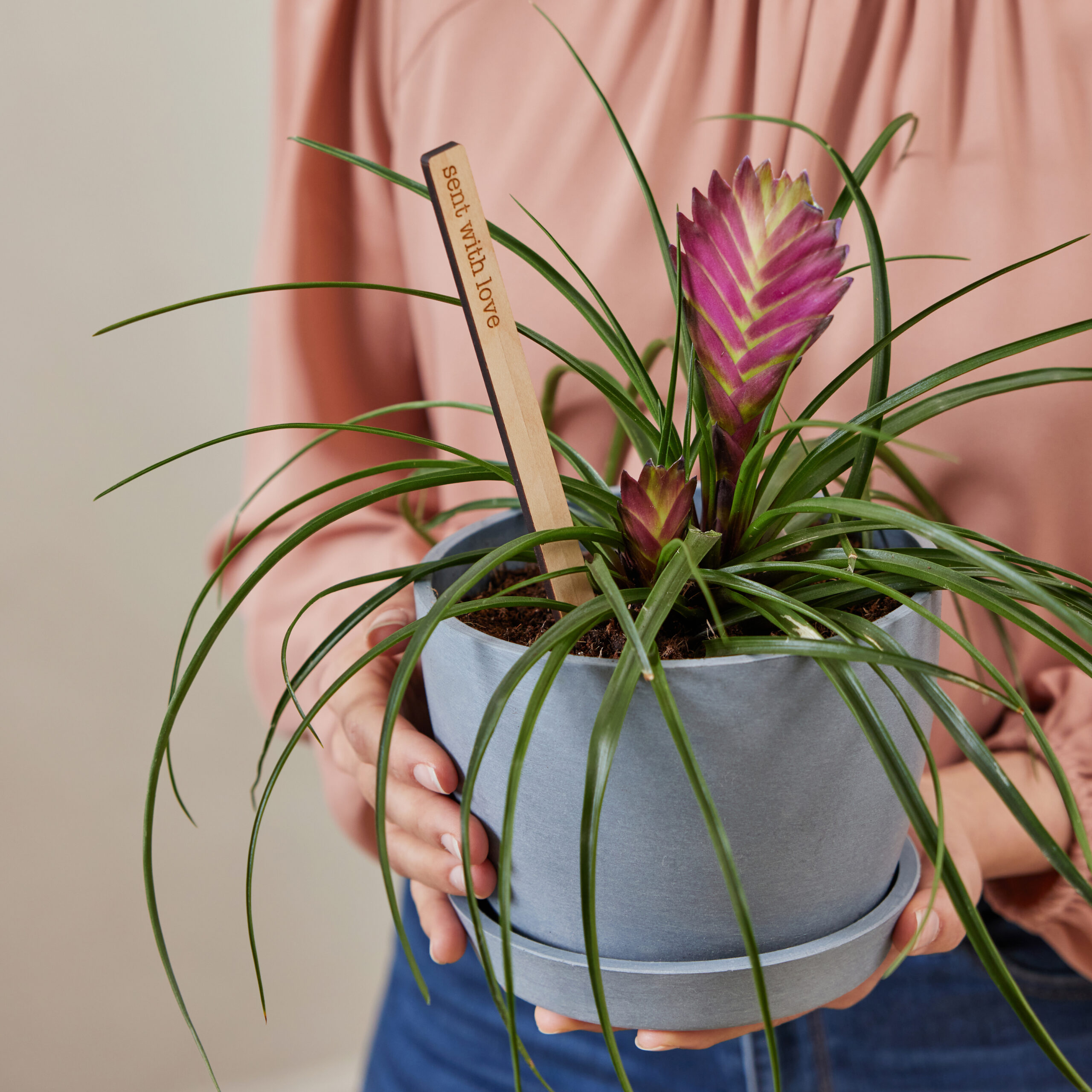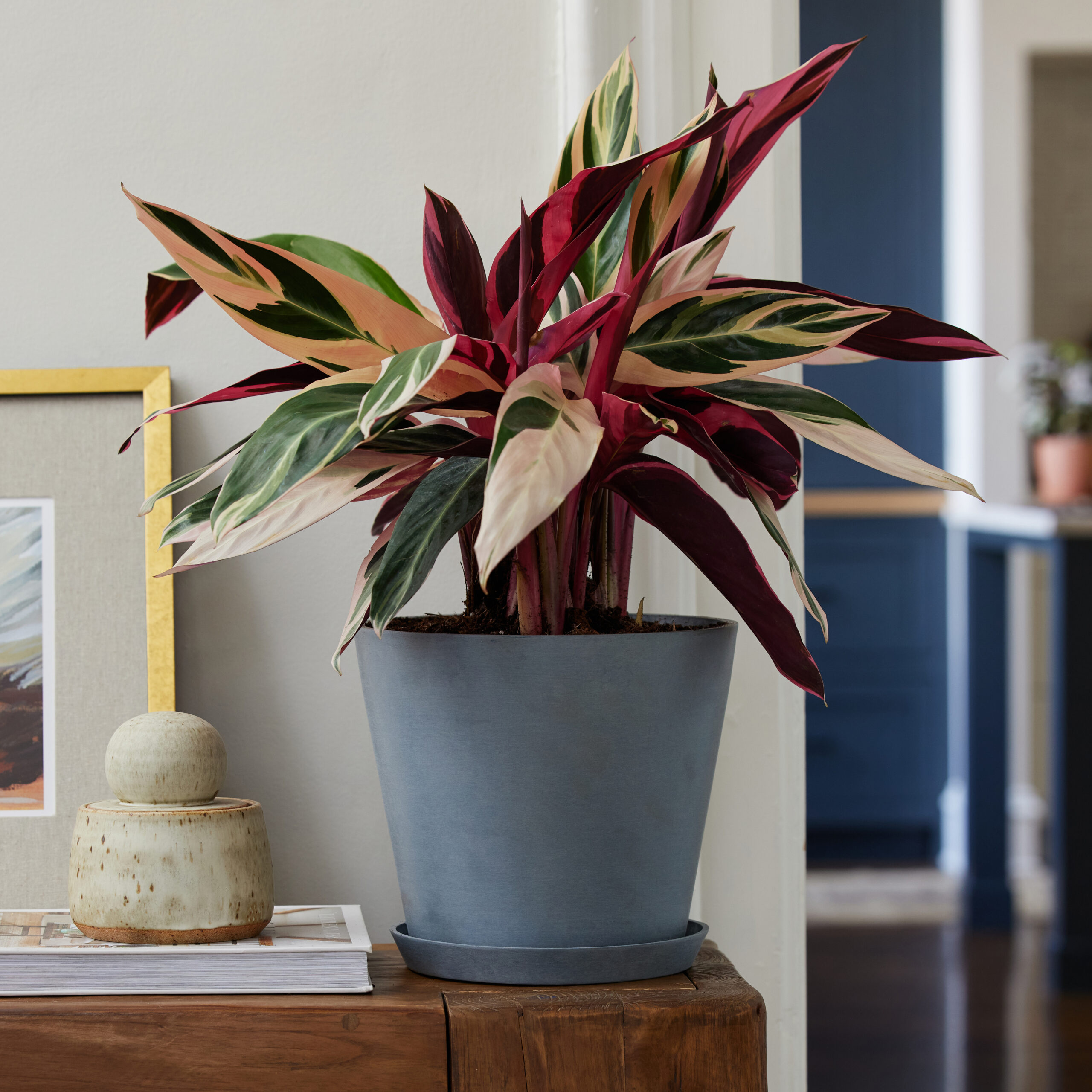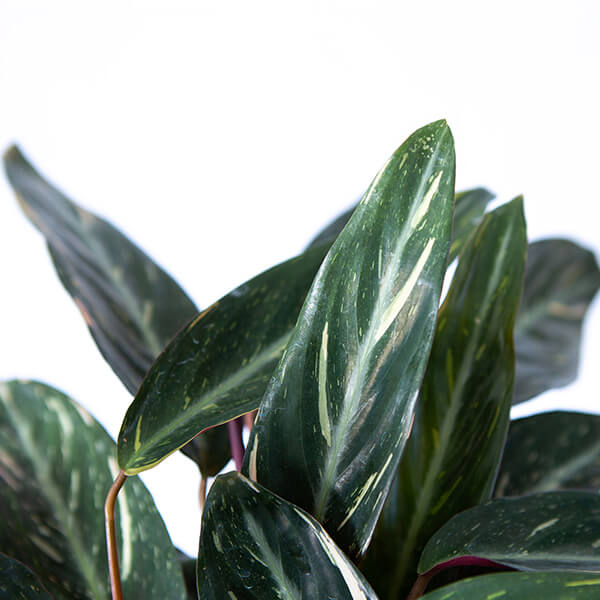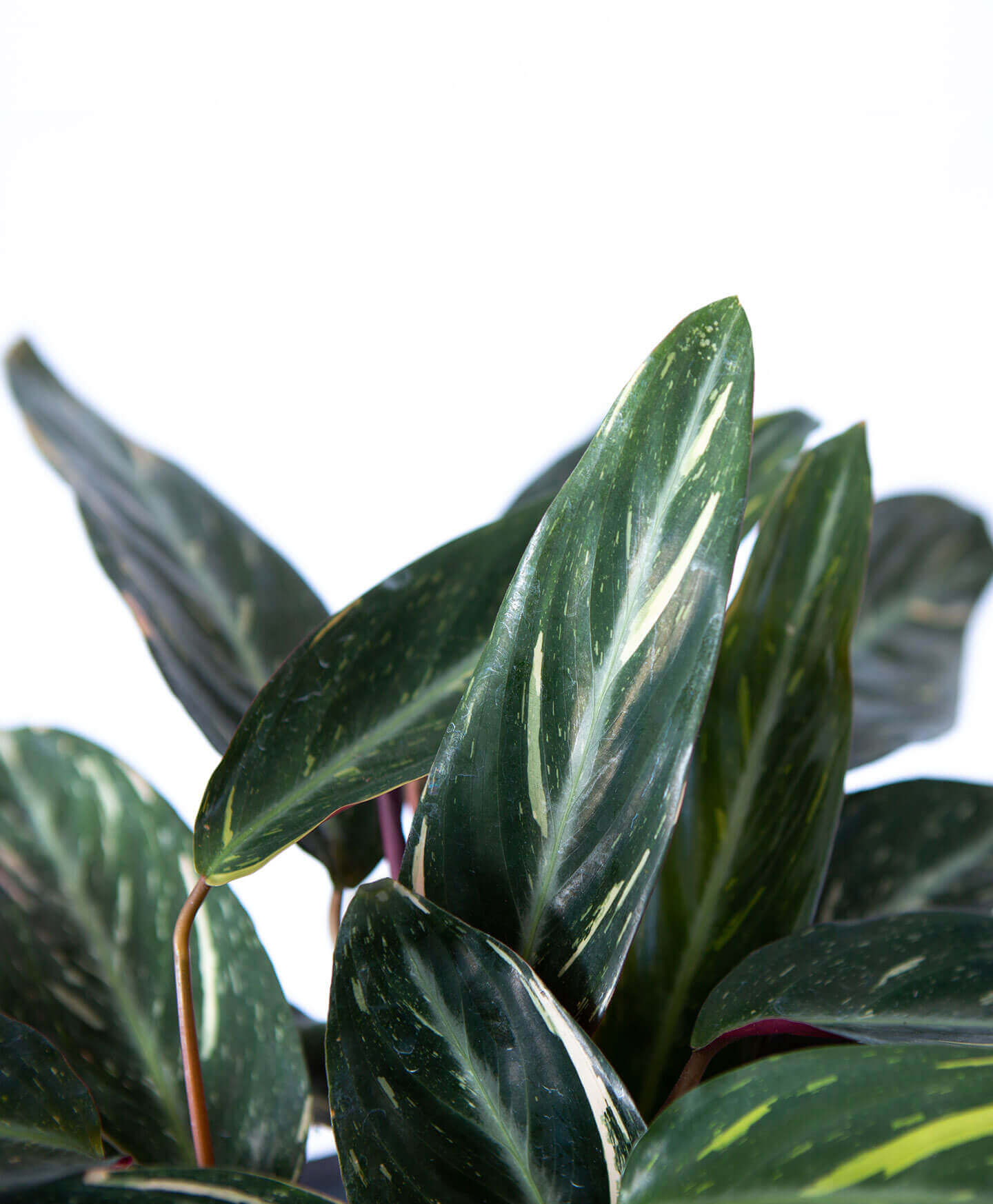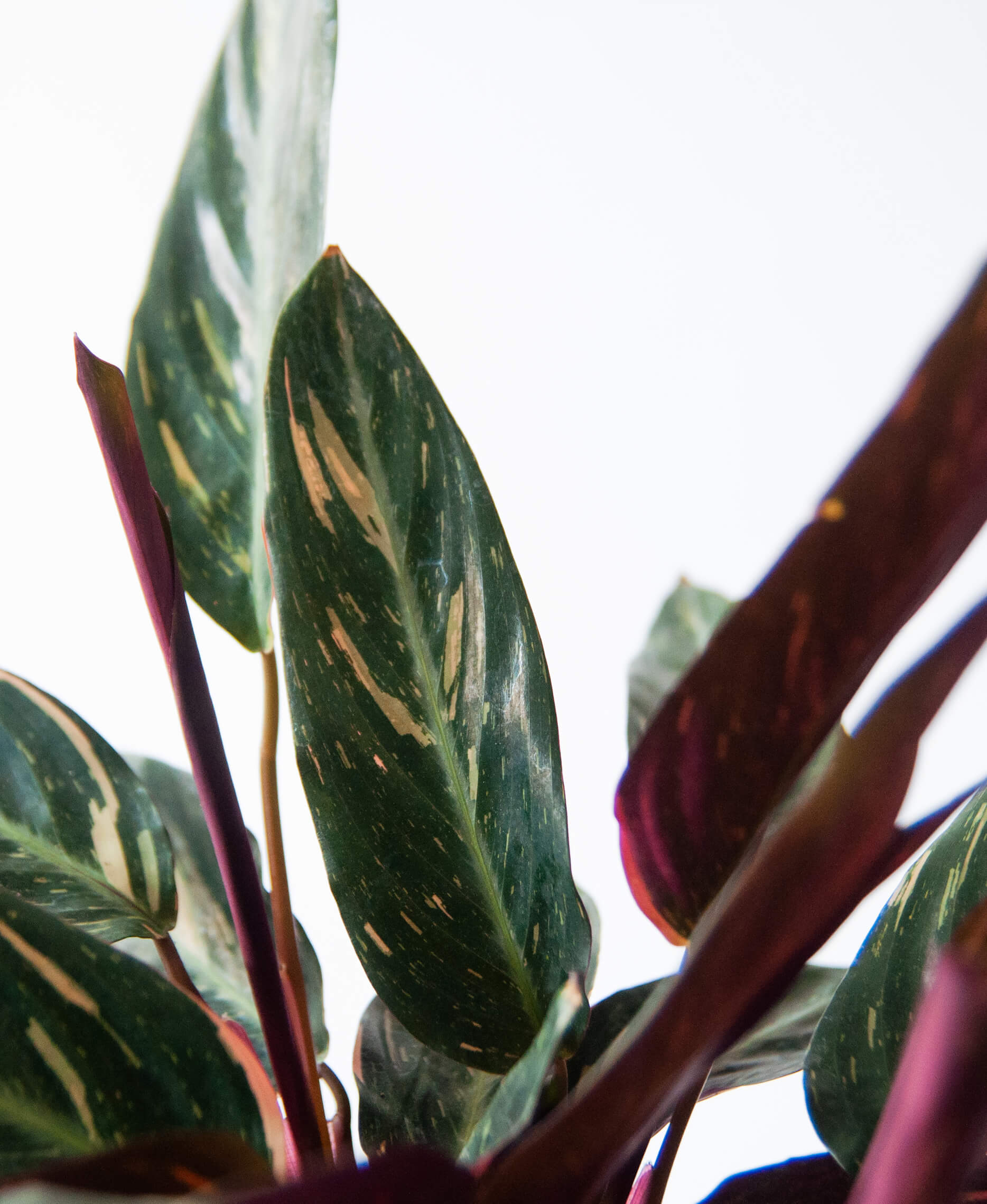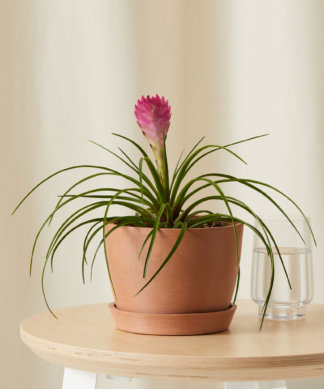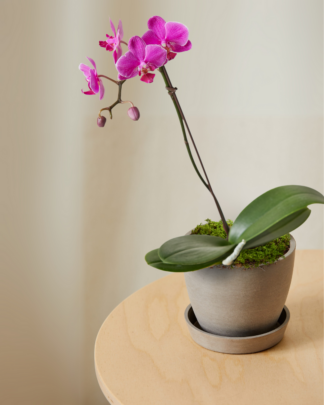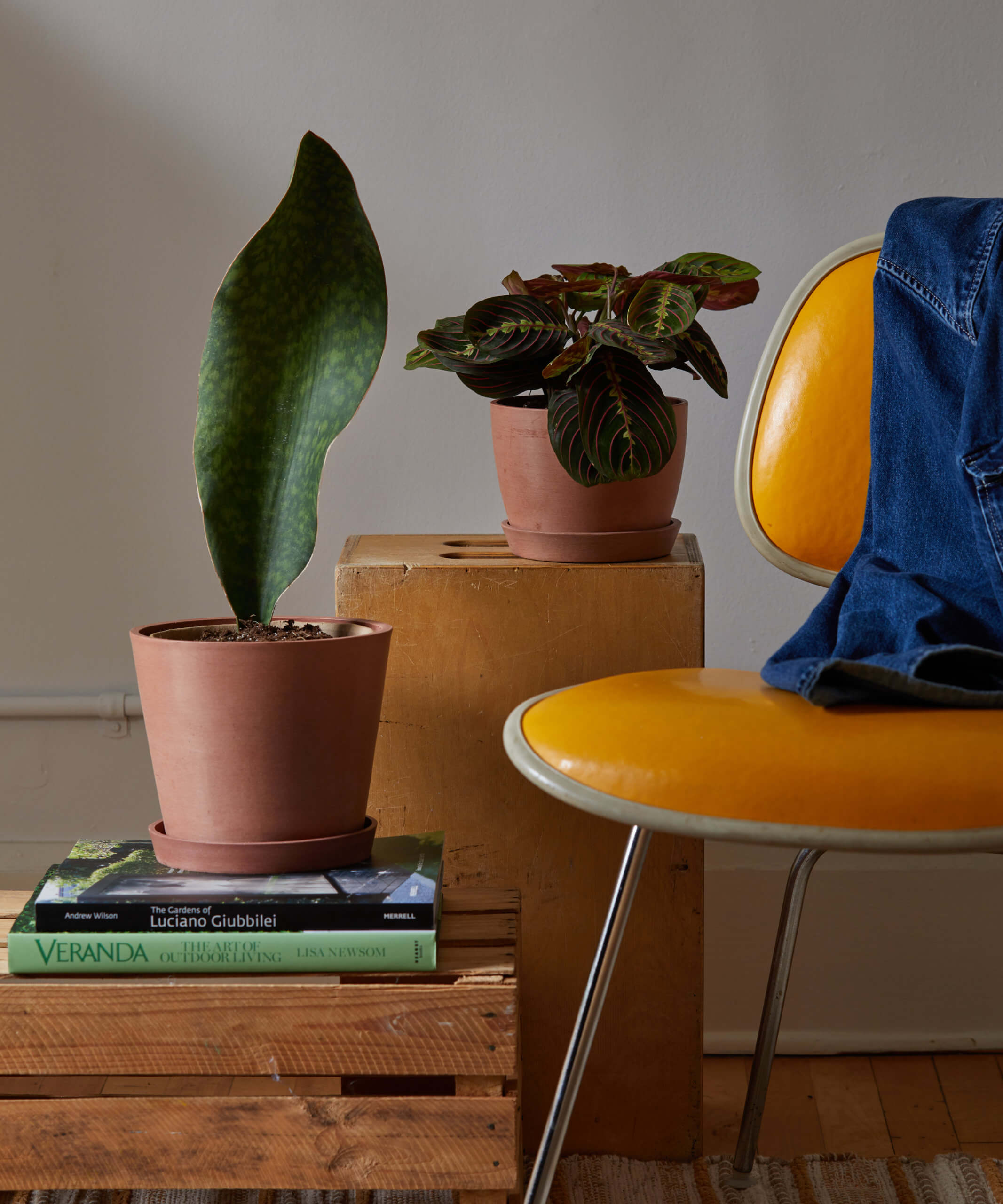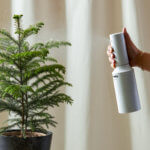How to care for your Stromanthe
Use these instructions to care for a Stromanthe. This guide will tell you how to water a Stromanthe; its light, temperature, humidity preferences and any additional care it might need to help it grow.
Stromanthe Peacock
Place your Stromanthe Peacock in a warm, well-lit spot. The more bright indirect light the plant receives, the more variegation you will see on the leaves. Never expose it to direct sunlight–it will scorch the leaves.
Water your Stromanthe when the top 25% of soil is dry. Water until liquid flows through the drainage hole at the bottom of the pot and discard any water that has accumulated in the saucer.
Your Stromathe Peacock loves a humid environment, so feel free to mist every day. Use a pebble tray or a humidifier during the winter months when the air tends to be drier. The leaves will turn brown and crispy when the air is too dry.
Your Stromanthe Peacock prefers temperatures between 65-80 degrees during the day and no cooler than 60 degrees at night. Avoid placing your plants near heating and air conditioning vents and fans.
Feed once a month during the spring and summer with a liquid fertilizer for indoor plants.
The Stromanthe Peacock is non-toxic to humans and pets.
Turn your plant every week, as it will reach for the light. Adding humidity is key in keeping this plant healthy, thriving and full of splendid colors! Mist often or use a pebble tray.
Stromanthe Triostar
Your Stromanthe Triostar love to sit at a well-lit spot with bright, indirect light. Also, dusting the leaves guarantees that your plant will receive enough sunshine. Though it can tolerate lower levels of light, the bright variegation will fade. Avoid direct sunlight which can burn the leaves.
Your Stromanthe Plant needs a thorough watering when 25-50% of the soil volume is dry. Overwatering can cause root rot. Therefore, aim for moistening the soil with getting it waterlogged. Additionally, use room- temperature distilled water since the Stromanthe doesn’t like the chill (or the chemicals) from tap water. Growth naturally slows in the winter and watering frequency should be reduced.
Your Stromanthe flourishes more in a humid environment than a climate-controlled space with dry air. Use a pebble tray, group it with other plants, or place a humidifier nearby. You can also place your Stromanthe in a bathroom or kitchen where the humidity is higher. If this humidity is too low, leaf edges will begin to brown.
Your Stromanthe thrives in warm temperatures between 65-80°F, especially if they remain consistent. Avoid drafts from vents or drafty doors and windows.
Your Stromanthe appreciates a feeding every two to three weeks with a balanced formula that’s diluted at half strength. During the winter, when your plant naturally becomes dormant, you can stop fertilizing altogether.
Stromanthe Triostars are non-toxic to humans and pets.
Turn your plant regularly to maintain full and balanced growth, since it naturally grows towards the light. High humidity will help leaves develop with vivid coloration and large size.
